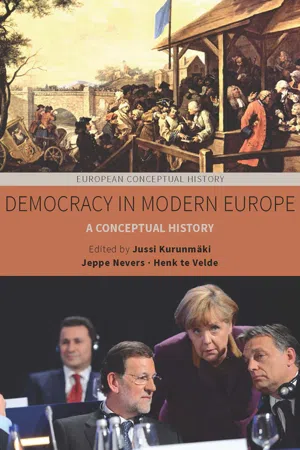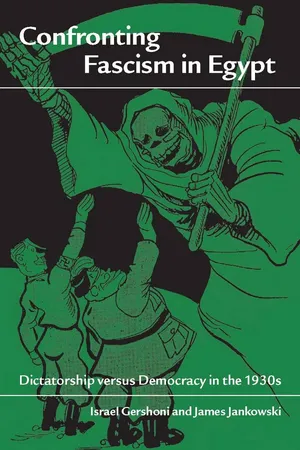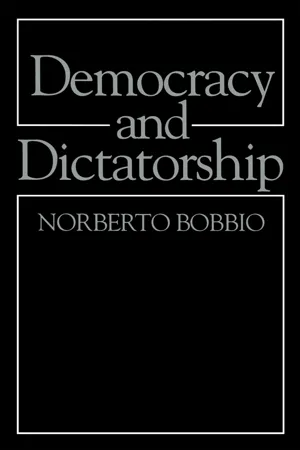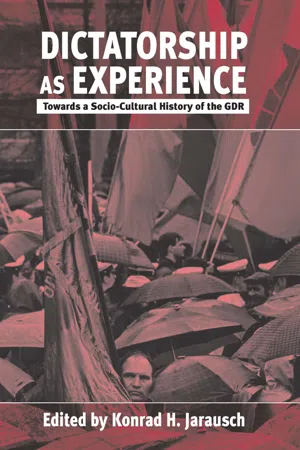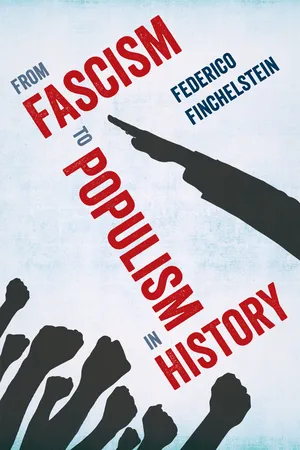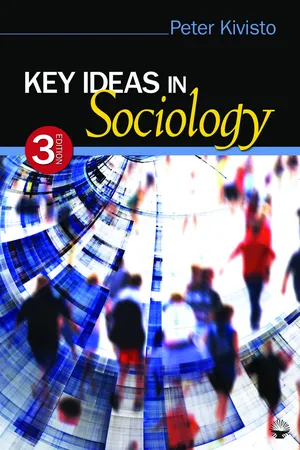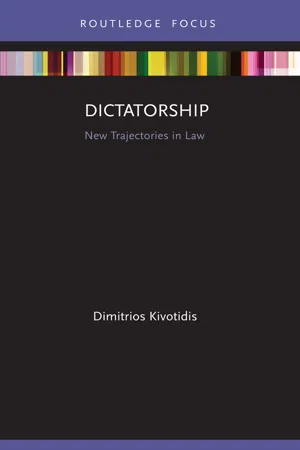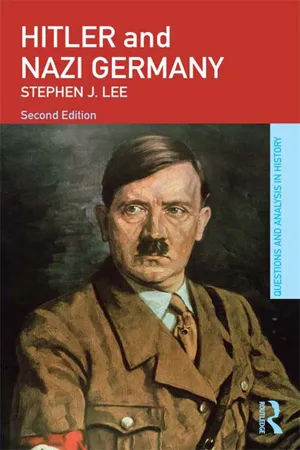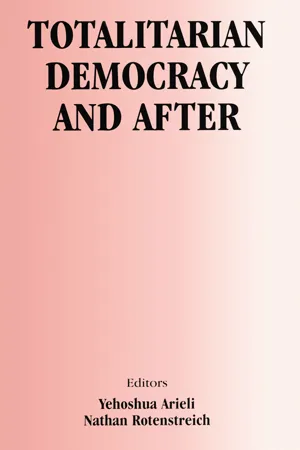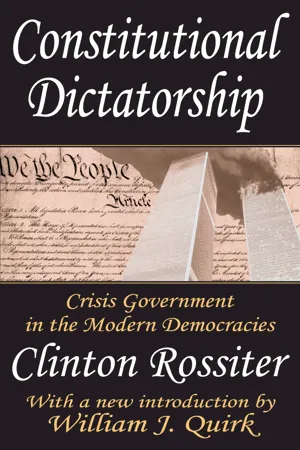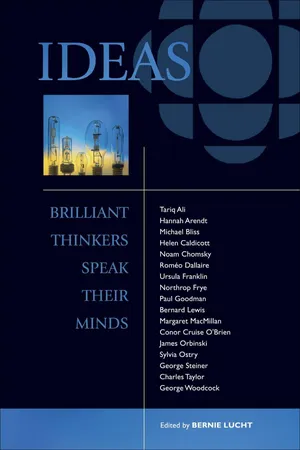History
Democracy and Dictatorship in Germany
"Democracy and Dictatorship in Germany" refers to the historical transition between democratic and dictatorial forms of government in Germany. This transition is marked by the rise of Adolf Hitler and the Nazi regime, which led to the establishment of a dictatorship. The subsequent defeat of Nazi Germany in World War II resulted in the restoration of democracy in the country.
Written by Perlego with AI-assistance
Related key terms
11 Key excerpts on "Democracy and Dictatorship in Germany"
- eBook - ePub
Democracy in Modern Europe
A Conceptual History
- Jussi Kurunmäki, Jeppe Nevers, Henk te Velde, Jussi Kurunmäki, Jeppe Nevers, Henk te Velde(Authors)
- 2018(Publication Date)
- Berghahn Books(Publisher)
68As was the case in the United States later on, it was the outbreak of the Second World War that ended these debates and the uncertainties of the public. The British people seemed unbroken by military defeat after defeat even before the United States joined the war. The concerns about whether or not the people would resist the appeal of dictatorship proved to be unfounded. A new idea entered the debate in order to provide a boundary between the ways of political thinking of the major opponents in that war: human rights. If totalitarian regimes could claim any democratic support at all or suggest that they were the more modern way to realize democracy, respect for individual human rights could now be emphazised to be the main distinction between the Western allies and the enemy.Germany in the 1930s: German Exiles and the Concept of Militant Democracy
Even before the Nazis seized power in Germany, a flow of intellectuals had begun to emigrate. After March 1933, German jurists, historians, political thinkers and all kinds of intellectuals travelled to countries in Europe that were still free and later on crossed the Atlantic. Many emigrants provided the remaining democracies with firsthand information and advice on how to respond to fascism. The experiences with the failure of the Weimar Republic were transformed into political theory very differently, in general as well as in terms of democracy. Some intellectuals were motivated to include fascism as part of a broader picture of social development and present civilization. Members of the Frankfurt School, dispersed in different places of exile, drew a very dark picture of the present and the future. Modern civilization turned out not to be the result of progress, but was showing signs of regress into barbarism, of which fascism was only one facet, albeit not the least important one. Fascism could have been judged as a disruption of the irresistible process of civilization or its exception; now it turned out to be the rule and the main direction of history as such.69 - eBook - ePub
Confronting Fascism in Egypt
Dictatorship versus Democracy in the 1930s
- Israel Gershoni, James Jankowski(Authors)
- 2009(Publication Date)
- Stanford University Press(Publisher)
46Cultural life in Nazi Germany served Sa‛id as the prime example of the evils of dictatorship. Characterizing the Nazi regime as engaged in no less than “the destruction of German culture,” Sa‛id termed Hitler and the German minister of propaganda, Joseph Goebbels, as “the wardens of the prison of culture” whose policies had placed German literature, journalism, theater, music, and film in “an intellectual jail.” The Nazis had turned culture into propaganda enlisted in the service of the state. This intellectual domination of the population was paralleled by the regime’s physical domination of Germans. Whereas Goebbels was “the agent of intellectual terror,” Hermann Göring was “the agent of physical terror” supervising the regime’s use of imprisonment, deportation, and violence to intimidate Germans. Above these agencies of control and domination stood the cult of the Führer: “the nation’s obedience and servitude to the Führer, the leader, is total, and the sanctity of his thoughts and ideas an absolute imperative for the nation.”47Commentaries on the respective merits of fascism versus democracy in al-Hilal and al-Risala in the later 1930s were more consistently negative about all forms of fascism. Different intellectuals focused their criticism of different aspects of Fascism and Nazism. The political methods demonstrated by Nazism in particular drew vehement criticism from ‛Ali Adham. Employing the term “Machiavellianism [al-makyafiliyya ]” to characterize Nazi methodology, Adham may have ascribed more ideas and themes to Niccolo Machiavelli and his political treatise The Prince than they in actuality possessed; but there is no question that he meant the term as one of utter condemnation. By “Machiavellianism,” Adham meant a new style of politics based on manipulation, a cynical disregard for the truth, and extreme opportunism, a politics in which naked power reigned supreme. All methods were legitimate in Machiavellianism, including the use of force, for the sake of achieving the chauvinistic Nazi aims that were totally dismissive of liberal and universal values. According to Adham, the original Machiavellianism of The Prince , transmitted and refined through Hegel’s cult of the state, Nietzsche’s Superman, and Bismarck’s realpolitik, had reached its monstrous twentieth-century apogee in Nazism and Hitler. Nazi Machiavellianism was the politics of “the worship and glorification of the state,” of “the triumph of absolute dictatorial rule,” that if unchallenged threatened to “shatter civilization and turn it into a heap of debris.” Writing in 1936, Adham called on the forces of democracy to defend human culture against this destructive Machiavellianism. The survival of civilization itself demanded the restoration of humanitarian values, the consolidation of democracy, the fostering of mutual understanding among peoples, and the total rejection of “coarse, violent Machiavellianism.”48 - eBook - ePub
Democracy and Dictatorship
The Nature and Limits of State Power
- Norberto Bobbio(Author)
- 2017(Publication Date)
- Polity(Publisher)
As democracy came to be considered the best (or least bad) form of government – the form best suited to the most socially, economically and politically developed societies – the evaluative use of the theory of governmental forms simplified the traditional typology and became polarized, as already said, around the dichotomy of democracy/autocracy. In common use, however, the usual term for the second part of the dichotomy is not ‘autocracy’ but ‘dictatorship’. Today the use of the term ‘dictatorship’ is so widespread for governments which are not democracies and which have arisen by suppressing preceding democracies that the technically more correct term ‘autocracy’ has been relegated to manuals of public law. The present great dichotomy is not an opposition of democracy and autocracy but of democracy and dictatorship, even if the second term is used in a historically incorrect manner. The use of the term ‘dictatorship’ to refer to all non-democratic regimes became widespread after the First World War, both in the heated debate on the form of government established by the Bolsheviks and in the descriptions of fascist regimes, beginning with the Italian, which were employed by their opponents. This opposition of dictatorship to democracy within a system of discourse where democracy came to have a eulogistic meaning ended up by imputing to ‘dictatorship’ a negative meaning which was contrary to its historical usage and which really belonged in classical philosophy to other terms such as ‘tyranny’ and ‘despotism’ and, more recently, ‘autocracy’. Even in 1936, Elie Halévy could define his own times as ‘the age of tyranny’, but today this expression is no longer used to define the 20 years between the two world wars: the regimes that Halévy called ‘tyrannies’ have passed into history as ‘dictatorships’.’Dictatorship’ is a term which, like ‘tyranny’, ‘despotism’ and ‘autocracy’, derives from classical antiquity. However, it differs from them in having had originally and for centuries a positive connotation. ‘Dictator’ was the name of the office of an extraordinary Roman magistrate, which was instituted in about 500 BC and lasted until the end of the third century AD. He was nominated by one of the consuls under exceptional circumstances such as the conduct of a war (dictator rei publicae gerundae causa) or the suppression of a revolt (dictator seditionis sedandae causa) and because of the exceptional situation he was given extraordinary powers. These consisted above all in the decreasing distinction between the imperium domi, which was the sovereign command exercised within the city walls and consequently subject to such constitutional limits as provacatio ad populum, and the imperium militiae - eBook - ePub
Dictatorship as Experience
Towards a Socio-Cultural History of the GDR
- Konrad H. Jarausch, Konrad H. Jarausch(Authors)
- 1999(Publication Date)
- Berghahn Books(Publisher)
What is here called a “modern dictatorship” is similar to some definitions of “totalitarian dictatorship,” especially those put forward in Anglo-American works. 10 If we prefer the term “modern dictatorship” over “totalitarian dictatorship” to characterize and study the GDR, this choice does not imply that the latter should be rejected out of hand as useless for a comparison of “red” and “brown” dictatorships, 11 but it is rather based on the following reasons. Despite all of the discussion surrounding the term “totalitarianism,” and its theoretical frameworks, it is not generally realized – at least in Germany – that two different, conflicting definitions of the term have existed side by side. When applied to the GDR, these can lead to rather contradictory results. The first definition goes back to Hannah Arendt, and identifies as one of the central characteristics of totalitarian regimes their tendency to constant mobilization, permanent movement, and idiosyncratic loss of structure, as well as the resultant release of destructive energies directed both inwards and outwards – the presence of excessive force and terror that culminated in an aggressive dynamism, leading ultimately to self-destruction. With this definition Arendt most definitely had Hitler’s Germany and Stalin’s Soviet Union in mind; her analysis “fits” these two systems extremely well, and continues to do so to this day. 12 But it is also certain that, judged by these criteria, the GDR cannot be considered totalitarian, at least since the 1970s. The regime neither ceased to be a modern dictatorship based on communist models, nor did it relinquish terror as a method of rule. But the extent and degree of violence and terror within the system were fundamentally different from that of National Socialist Germany or the Stalinist USSR. The problem of the late GDR was not permanent revolution, but the onset of arteriosclerosis - eBook - ePub
- Federico Finchelstein(Author)
- 2019(Publication Date)
- University of California Press(Publisher)
THREE Populism between Democracy and Dictatorship Dictatorship is one of the foundations of modern populism, and yet populism is not dictatorship. In the context of the early Cold War period, this paradox played out in modern populism’s renunciation of dictatorial rule, which in turn created a new, authoritarian regime form of democracy. The fascist dictatorial experience was a key factor in the emergence of populist regimes, and populism was is in part defined in terms of its opposition to dictatorship. “Fascist dictatorship,” a specific historical type of mass modern dictatorship, then, is central to the genealogy of populism. Some approaches to populism emphasize the more recent oppositional links and continuities between populism and Cold War dictatorships, and in these pages, I am in conversation with those perspectives. In contrast to them, I stress the need to understand the ambivalent, oppositional nature of populism in terms of its firm rejection of pre–Cold War fascism’s version of dictatorial rule. 1 Populism was a form of antiliberal, authoritarian democracy well before the emergence of the now classic Cold War dictatorships in Brazil, Pakistan, El Salvador, and many other places, and it was and continues to be defined by its contextual rejection of dictatorship. At the same time, populism still shares some dictatorial elements, carried forward especially from the remnants of the fascist global experience of mass dictatorship that ended after the end of World War II. Can populism as an ideology, a movement, and a regime be democratic and highly anti-institutional? Can an anti-institutional style of politics that shares many dimensions with dictatorship become its opposite? Or, rather, can pondering populism’s incongruities take us only so far if, as I argue, both are true and have always been part of the experience of modern populism - eBook - ePub
- Peter Kivisto(Author)
- 2010(Publication Date)
- SAGE Publications, Inc(Publisher)
The formative period of Parsons’s intellectual development was shaped by three significant world events: the Russian Revolution, which established the first communist state; the Depression that rocked economies throughout the world; and the rise of fascism in Germany and Italy. Both communism and fascism presented challenges to democracy, whereas the Depression called into question the ability of capitalism to work its way out of the economic crisis that began with the stock market crash in 1929. In this milieu, there was considerable speculation about whether the United States and other functioning democracies would follow the road to one or another form of totalitarianism: communism or fascism.Parsons (1993, 1954) contributed to this discussion in several of his early writings, especially in a series of essays written during World War II on fascism as a social movement, on democracy in pre-Nazi Germany, and on the role of the authoritarian personality in German society. He agreed with the essentials of Weber’s view that Germany lagged behind trends elsewhere because of the continued influence in Germany of premodern elements. Parsons (1954) described the difference between Germany and more established democracies as follows:It has thus long been clear to competent scholars that the German state differed markedly from its British or American counterparts. This difference may in the main be characterized in terms of its interdependent “feudal,” militaristic, bureaucratic, and authoritarian features. The predominant impress of these elements came from Prussia, but the position of Prussia was sufficiently central to strongly color the whole of Germany. (p. 106)With the German defeat in World War I and the punitive terms of the Treaty of Versailles, political factions on the extreme Left and the extreme Right jeopardized the democratic aspirations of the Weimar Republic. In explaining the meaning of the victory of the far Right with the rise to power of the Nazi Party, Parsons used Weber’s typology of authority to describe how the Nazi state differed from Western democracies. Whereas in the latter, charisma was seen as being held in check by the more powerful legal-rational authority, in Germany charisma got the upper hand. Hitler’s charismatic authority, fueled by a reactionary “blood and soil” nationalism, unleashed powerful irrational forces. This meant that rationality, in the form of getting the trains to run on time and in creating a highly efficient machinery of death in the assault on European Jewry, ended up in the service of the irrationality of charisma. - eBook - ePub
Dictatorship
New Trajectories in Law
- Dimitrios Kivotidis(Author)
- 2021(Publication Date)
- Routledge(Publisher)
In the aftermath of the imperialist war of 1914–1918, another development shook the dominant capitalist states and threatened the reproduction of the leading position of their ruling classes: the October Revolution of 1917. The establishment of a first workers’ state, a new form of state organisation based on the institution of workers’ councils, led to a pan-European movement, a revolutionary wave that threatened the foundation of world capitalism. To this revolutionary wave the bourgeois state responded in different ways, with different mixtures of the elements of repression and concessions. In the interwar period, following a brief process of stabilisation, the capitalist crisis of 1929 created conditions favourable for yet another working-class revolt. In many capitalist states the new crisis was dealt with through the establishment of dictatorial regimes. This chapter, for reasons of brevity and clarity of the argument, focuses on one of them and analyses the case of the Nazi dictatorship, established in 1933 in Germany, and the various concepts that have been used to approach this regime, such as dictatorship, totalitarianism, Caesarism and fascism.Of course there is an abundance of historical examples that could be used to illustrate the role that the concept and institution of dictatorship have played in the process of reproducing capitalism, such as Italian fascism, Franco’s regime, the Metaxas dictatorship as well as the Colonels’ dictatorship in Greece, or the various right-wing military dictatorships that had been installed or at least supported by the United States in Latin American countries. However, I have chosen to examine one paradigmatic historical example in much more depth, rather than proceed with a superficial comparative overview of several historical cases. - eBook - ePub
- Stephen J. Lee(Author)
- 2013(Publication Date)
- Routledge(Publisher)
(Länder) representation was given shorter shrift. The Reichsrat was abolished by the Nazi-controlled Reichstag with the intention of removing the remnants of the federal system (see below) and to prevent the possibility of local political influences resisting the spread of the Nazi political system. As for the constitutional system of checks and balances – this was now seen as an expression of the political uncertainty of liberal democracy. Since the Nazi regime intended to do away with all such uncertainty and hence throw out any such constraint, the legislature needed only one central chamber.The key characteristic of a dictatorship is an executive unfettered by a potentially hostile legislature. During the Weimar period the Presidential emergency powers could be used under Article 48 but these could be challenged by the Reichstag. As we saw in Chapter 2 , Analysis 2 , Hitler, as Chancellor, exercised these powers in February 1933 and then effectively had them transferred to the Chancellor through the Enabling Act of March 1933. This conferred on the executive the same right as the Reichstag to initiate legislation. The remaining obstacle, however, was the existence of a dual head of state – in the form of the President and Chancellor. Some dictatorships managed to coexist with this situation. Fascist Italy, for example, retained the duality in the form of the Duce (Mussolini) and the King (Victor Emanuel III). In Nazi Germany, however, Hitler was reprieved from a similar situation by the death of Hindenburg in 1934. This was followed in August by the Law concerning the Head of State of the German Reich, which combined the Chancellorship with the Presidency, centralising both offices under Hitler as Führer. From this new title emerged personalised dictatorship with the hydra of Führerprinzip examined below.No dictatorship finds it easy to coexist with a federal system. The Nazi regime faded it out altogether. The process started with action against state governments in the ‘town hall revolution’ of March 1933. Particularly affected were Hamburg, Hesse, Lübeck, Bremen, Baden, Saxony and Württemberg. This was followed – belatedly in terms of the ‘legal revolution’ – by legislation in the Reichstag in March and April 1933 – the First and Second Laws for the Co-ordination of the Federal States – which created the office of Reich Governor (Reichsstatthälter) and imposed Nazi Party control. The next stage was the formal abolition of the federal structure by the abolition of the Reichsrat in January 1934 and the disappearance of the state parliaments, or Landtäge, - eBook - ePub
- Yehoshua Arieli, Nathan Rotenstreich(Authors)
- 2014(Publication Date)
- Routledge(Publisher)
Democracy and Totalitarianism , New York 1968.7 C. J. Friedrich & Zb. Brzezinski, Totalitarian Dictatorship and Autocracy , Cambridge (Mass.) 1956. Cf. K.D. Bracher, ‘The Disputed Concept of Totalitarianism’, in Menze, op. cit. (n. 1), pp 19–21.8 J.G. Fichte, Reden an die deutsche Nation 1807–8 , Leipzig-Vienna n. d.9 H. Mommsen, Arbeiterbewegung und nationale Frage , Göttingen 1979.10 R. Dahrendorf, Gesellschaft und Demokratie in Deutschland , Munich 1965.11 Whether the DDR peace movement is a real challenge to the system is still an open question.Passage contains an image Political Traditions and Responses in Islam by HAVA LAZARUS-YAFEH The Hebrew University, Jerusalem
AMONG SUCH A DISTINGUISHED gathering of historians and scholars I feel somewhat out of place, especially as I come from the philological tradition and lack the historical discipline and terminology. Yet, being primarily interested in the phenomena of religion, I feel, like so many nowadays, that we have to integrate our separate fields of studies not only in order to catch the broader implications of events and their real deeper meanings, but in order to understand even isolated, as it were, separate phenomena or cases.Let me add that I was very privileged in having several special private lessons from the late Jacob Talmon, not in any university classroom, but during the long walks he used to take in the beautiful Jerusalem park on the slopes around the Monastery of the Cross. There a small group of intellectuals, all afflicted with heart diseases (the ‘Herzl’ Club he used to call them) used to take their daily prescribed walk, and often met, quite unintentionally. He, of course, would do most of the talking, fascinating everybody with his enthusiastic, brilliant, analysis of events. They have all passed away. He was the last to go. May my short remarks be a humble tribute to the memory of the walks in the park. - eBook - ePub
Constitutional Dictatorship
Crisis Government in the Modern Democracies
- Clinton Rossiter(Author)
- 2017(Publication Date)
- Routledge(Publisher)
2 an institution of government foreign to all accepted criteria of the constitutional state, had it not been "built into its framework." A weapon of reaction from Germany's imperial past had been republicanized and converted into a weapon of democracy. The power to dole out this extreme medicine resided in the hands of the regular civil organs of government, particularly the President of the Reich and the Cabinet, and their responsibility to Reichstag and people was in no wise circumscribed. Thus was the dictatorship made constitutional.Article 48 in the Constitutional Scheme
FROM a strictly theoretical point of view the dictatorship had no place in the German pattern of government. German jurists agreed that Article 48 was not to be considered in relation to the normal structure of the separation of powers. The dictatorship was an all-inclusive fourth power to be held in abeyance as the peculiar expression of the state's will to survive; when it was called into action, it combined all the other powers and something more. The dictatorship was a "fusion of the three categories of power, a union, a reestablishment of the original state of affairs that preceded the separation of powers."3 Although no new powers attached to the dictator, the area of operation of his competence was broadened and deepened by the suspension of the seven fundamental rights. He was thus able to assert the total authority of the state in disregard of all the usual checks and balances and the guarantees of freedom set up to protect the German citizen from the arbitrary action of his government. It is important to recall again that, although by the "dictator" was specifically meant the President, all the other organs of the government were joined with him in the exercise of his prerogative. It was a magnificent assertion of the sovereignty of the German people, manifested in a forthright expression of the right of national self-preservation. "Dictatorship is rather government pure and simple—in the original, fundamental sense of the word—that is, IMPERIUM, or a disposition over the entire power of the state."4 The possession and exercise of an authority analogous to the great Roman doctrine of Imperium - eBook - ePub
Ideas
Brilliant Thinkers Speak Their Minds
- Bernie Lucht(Author)
- 2010(Publication Date)
- Goose Lane Editions(Publisher)
But before you leap to the idea that dictatorships necessarily perform better than democracies do, remember there’s a huge class of other regimes: Papa Doc’s Haiti, Mobutu’s Zaire, the last fifteen or twenty years of the former Soviet Union, when the regime’s economic performance was very, very bad. And a quick glance around the economic systems of dictatorship immediately shows that there’s very little that you can say in general about what the economic system looks like under a dictatorship. You have all kinds. Think of the regime in Haiti. Compare that to the regime in the former Soviet Union, compare that regime to the economy of South Korea or Pinochet’s Chile, and you see that political dictatorship is compatible with all kinds of economic systems. And at that level, there are no generalizations about the dictator’s economy. But there’s one thing you can say if you compare dictatorships to democracy, which is that dictatorships are much more capable of decisive action than democracies are. Whether the action’s good or bad, dictatorships are much more capable of it. If a dictator wants to raise taxes, if a dictator wants to go to war, if he wants to take tough measures against crime, he can do these things. He may face some opposition among his advisers, but in general he’s free to do what he wants.Democracies, on the other hand, are often mired in inaction. Democratic politicians are often afraid to act because essentially they feel there is no consensus in the society as to what they should be doing. As soon as they see that there’s no consensus — there may be a consensus, for example, that something should be done, like there is about the deficit, but there’s no consensus as to what should be done — under these circumstances, democratic politicians often prefer to do nothing. They don’t want to take the risks of creating enemies among important groups in the population and losing their support, so they cloud their statements in ambiguity, they pretend to be on all sides of the issue, and they take very little in the way of decisive action. The result is that people often become cynical, and they lose trust in politicians. The more they do that, the more they make it even harder for politicians to act decisively in a democracy. And so it sometimes seems that, while there is freedom to speak in a democracy, very often no one is listening. The politicians do not act on the demands that are made on them constantly by the citizens.I suggest that this inaction problem of democracy is the chief basis for what I like to call “the allure of dictatorship”: the capacity of the dictator to take decisive action is what attracts people to the notion of dictatorship. The classic example is Weimar Germany, in the early 1930s. There was an enormous unemployment problem from the Depression, which hit Germany particularly hard, and there was a huge problem of political violence in the streets, on both the left and the right, and the politicians under Weimar didn’t want to do anything to solve either of those problems. Hitler promised decisive action to curb political violence, and he also promised a job for every German.
Index pages curate the most relevant extracts from our library of academic textbooks. They’ve been created using an in-house natural language model (NLM), each adding context and meaning to key research topics.
